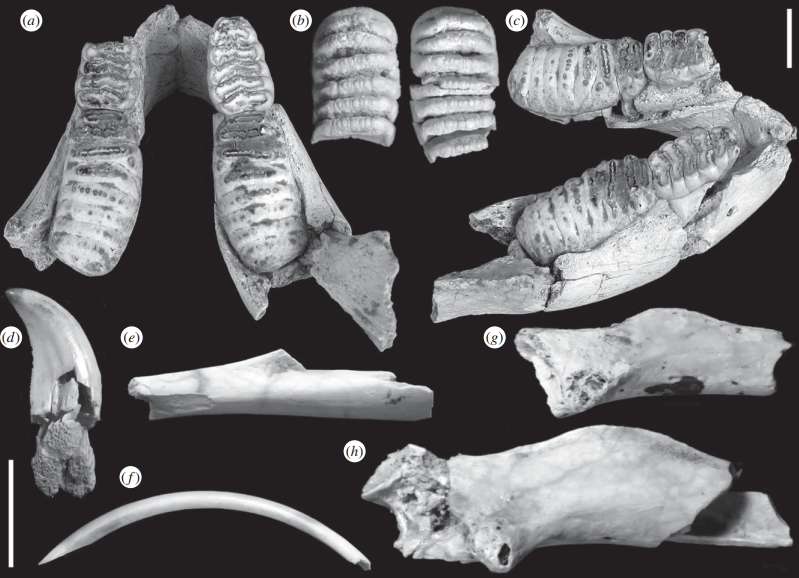September 21, 2017 report
Study of fossil remains on Sumba island reveals unique creature history

(Phys.org)—A team of researchers from the U.K., Indonesia and Australia has found fossil evidence of several unique creatures that once lived on the Indonesian island of Sumba. In their paper published in Proceedings of the Royal Society B, the group describes their expeditions to the remote island, the fossils they found and their theories regarding the evolutionary history of the Wallacean archipelago.
Wallacea is an archipelago that lies between Australia and Asia—one of its most famous islands is Flores due to the discovery there in 2004 of fossil remains of Homo floresiensis, subsequently dubbed "the Hobbit" due to its diminutive stature. That discovery caused archeologists to wonder if other islands in the archipelago might harbor other fossil remains of interest. Little research has been conducted in the region, which makes the area attractive for new research endeavors. In this new effort, the researchers chose to focus on the island of Sumba, which lies directly south of Flores.
As part of their expeditions (conducted in 2011 and 2014), the researchers report that they found the fossilized remains of several interesting and unique extinct creatures. The list includes small creatures that resembled elephants (Stegodon), two species of giant rats, some large varanid reptiles and even evidence that the Komodo dragon once lived on the island. They note that some of the species were dated to a time as recent as just 12,000 years ago. It is still not known, of course, why the creatures disappeared from the island, though the team suggests it might have been due to the arrival of humans.
Evidence of the Komodo dragon on the island, the group points outs, offers the first evidence of their existence on an island other than Komodo, Rinca, Flores, Gili Motang and Padar. And that suggests they likely lived on some of the other unexplored island in the area, as well. The group's findings also indicate that the archipelago overall likely holds evidence of a wide range of undiscovered extinct creatures and possibly the remains of other human relatives. They suggest much more research needs to be done.
More information: Samuel T. Turvey et al. Quaternary vertebrate faunas from Sumba, Indonesia: implications for Wallacean biogeography and evolution, Proceedings of the Royal Society B: Biological Sciences (2017). DOI: 10.1098/rspb.2017.1278
Abstract
Historical patterns of diversity, biogeography and faunal turnover remain poorly understood for Wallacea, the biologically and geologically complex island region between the Asian and Australian continental shelves. A distinctive Quaternary vertebrate fauna containing the small-bodied hominin Homo floresiensis, pygmy Stegodon proboscideans, varanids and giant murids has been described from Flores, but Quaternary faunas are poorly known from most other Lesser Sunda Islands. We report the discovery of extensive new fossil vertebrate collections from Pleistocene and Holocene deposits on Sumba, a large Wallacean island situated less than 50 km south of Flores. A fossil assemblage recovered from a Pleistocene deposit at Lewapaku in the interior highlands of Sumba, which may be close to 1 million years old, contains a series of skeletal elements of a very small Stegodon referable to S. sumbaensis, a tooth attributable to Varanus komodoensis, and fragmentary remains of unidentified giant murids. Holocene cave deposits at Mahaniwa dated to approximately 2000–3500 BP yielded extensive material of two new genera of endemic large-bodied murids, as well as fossils of an extinct frugivorous varanid. This new baseline for reconstructing Wallacean faunal histories reveals that Sumba's Quaternary vertebrate fauna, although phylogenetically distinctive, was comparable in diversity and composition to the Quaternary fauna of Flores, suggesting that similar assemblages may have characterized Quaternary terrestrial ecosystems on many or all of the larger Lesser Sunda Islands.
Journal information: Proceedings of the Royal Society B
© 2017 Phys.org





















